ID-DOC: general search
Here you can enter a general keyword and perform a general search.
??? What are these question marks doing here? These represent tools which we know by a Dutch or French name, but who's English name is yet unknown. Suggestions are always welcome!
If you cannot find a certain tool, or if you experience other problems with this page, please let us know at info@mot.be.
Search for: tool
Showing search results 1,201 - 1,250
1,487 results found
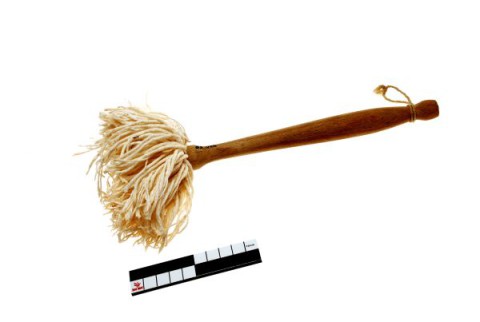
Sink brush
Brush with stiff bristles or steel wire, often fan-shaped, and a straight
or button-shaped handle. It is used to scrub the sink and dirty pots and
pans. Modern dish brushes are made of plastic. See also the pan scrubber.
[MOT]
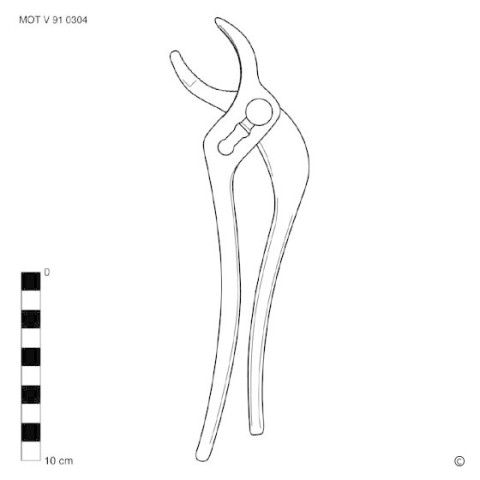
Siphon tongs
This text can only be consulted in Dutch
<https://www.mot.be/resource/Tool/319?lang=nl>
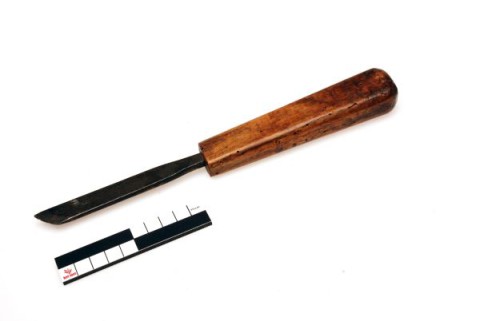
Skew chisel
Chisel with one bevel at an angle to the axis of the tool and not
perpendicular as with the regular chisel. The skew chisel makes it easy to
work in the corners. Especially the joiner and wood engraver use this
relatively rare chisel. The tool can be distinguished from the hook and
side tool which has two bevels. [MOT]
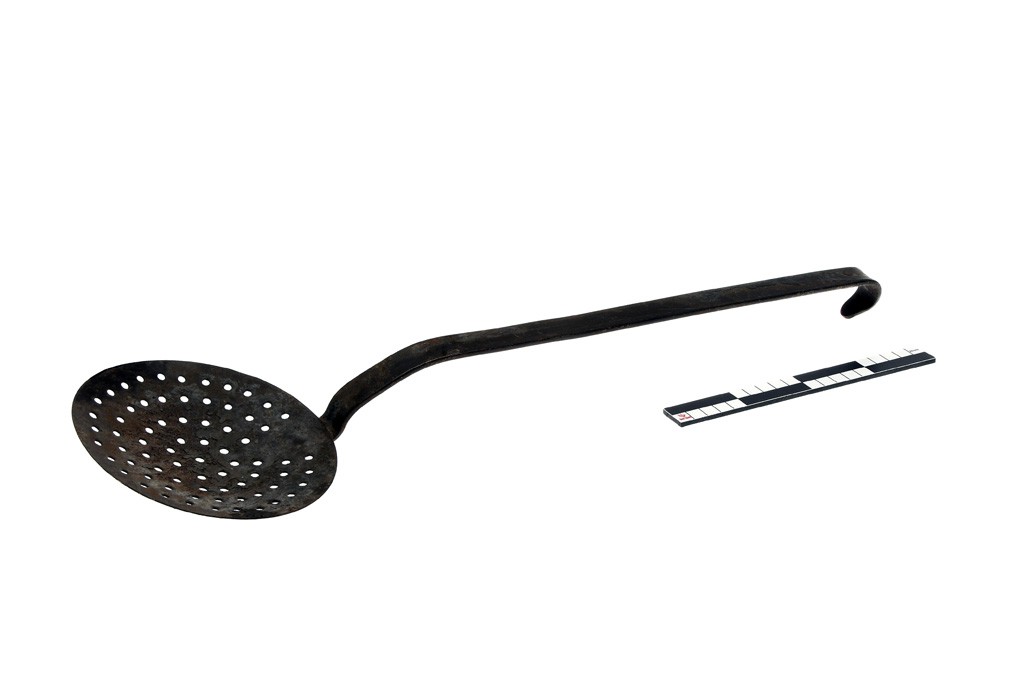
Skimmer
This text can only be consulted in Dutch
<https://www.mot.be/resource/Tool/skimmer?lang=nl>
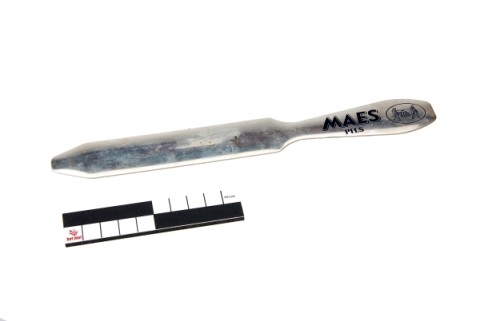
Skimming scoop
Use a skimming scoop to wipe off the excess foam from a tapped pint. It is
a flat, elongated (approx. 20-25 cm), light (approx. 50 gr), full metal
plate with a narrower handle. The skimming scoop is used to stroke the edge
of the glass in order to obtain a smooth, level foam layer. [MOT]
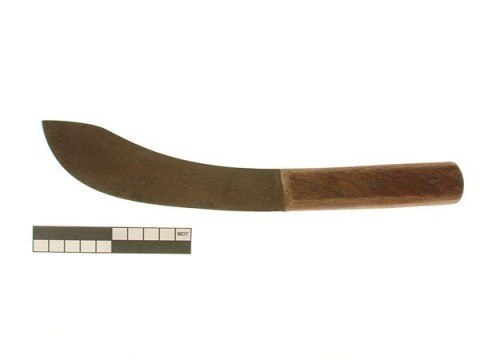
Skinning knife
The skinning knife has a sturdy, saber-shaped blade attached to a wooden or
plastic handle. The cut is rounded upwards, which makes the cutting surface
larger. With the skinning knife it is possible to separate the skin in one
piece from the meat. The skin is pulled away from the flesh and the knife
is drawn over and over again along the thin membrane between flesh and
skin. [MOT]
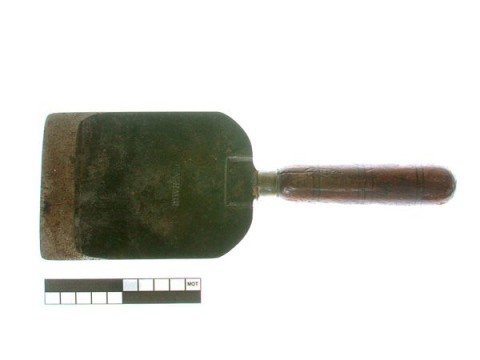
Skiver
Hand tool with a wide rectangular blade (6 to 10 cm) with a very sharp,
straight cut and a firm handle. With the skiver, the leather is processed
before it is cut to size. The leather worker places the blade almost
horizontally on the leather when planing and pushes the skiver forward. In
this way, it scrapes away unevenness on the surface of the leather and the
leather becomes evenly smooth and shiny. To prevent the skiving knife from
slipping, the part of the leather to be processed is dusted with flour. In
this way, the edge of the tool grips well on the leather. The skiver is
stored in a sturdy leather or cardboard cover.The tool can be distinguished
from the lace cutting knife. [MOT]
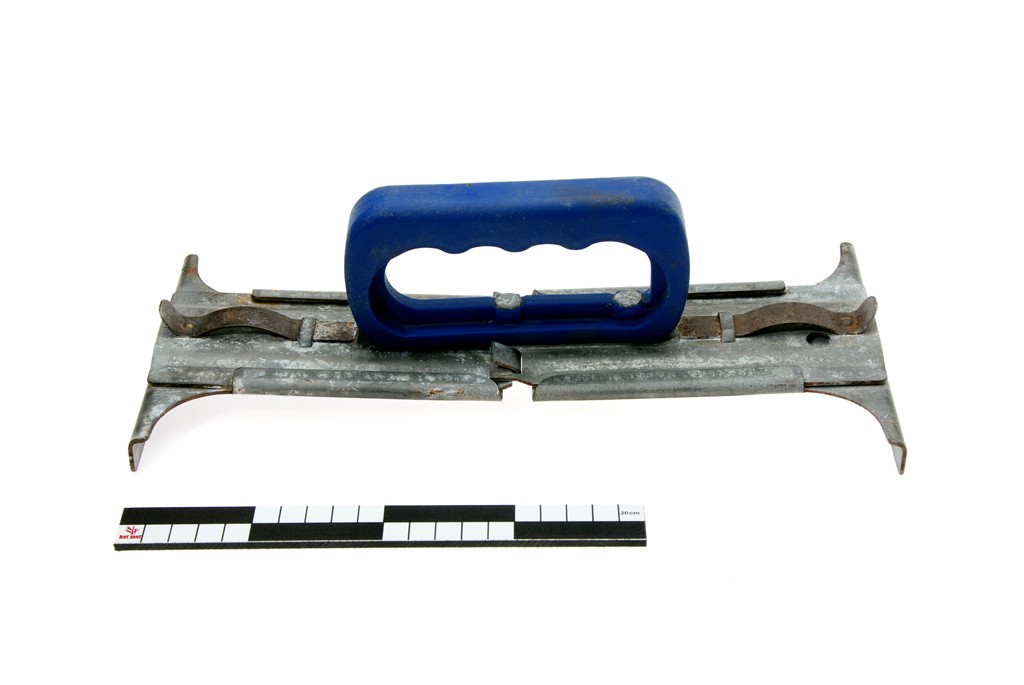
Slab lifter
This text can only be consulted in Dutch
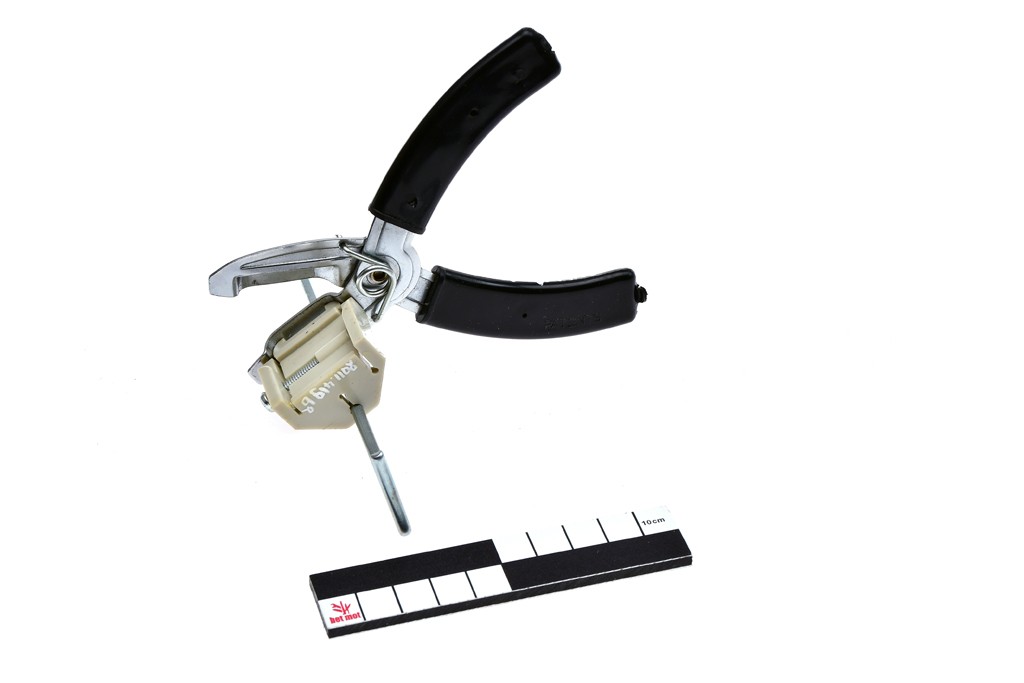
Slat scissors
Scissors to shorten slats to the same length to fit the window opening. They are equipped with a guide that is adjustable in width. See also the blind cleaner and the mitre shears. [MOT]
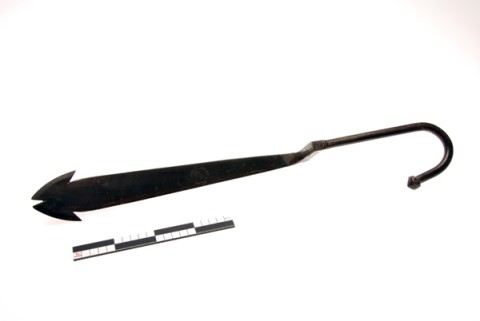
Slate ripper
The slate ripper is used to pull out the nails that hold the slates to a
roof. It is a metal sheet of approx. 30-50 by 4-5 cm with lateral backward
notches, one end of which is bent perpendicularly. A metal handle is forged
at that end that ends in a hook. The slater pushes the sheet under the
broken slate, grabs the nail into a notch and pulls the tool towards him;
sometimes he hits the right-angled part with his hammer. [MOT]
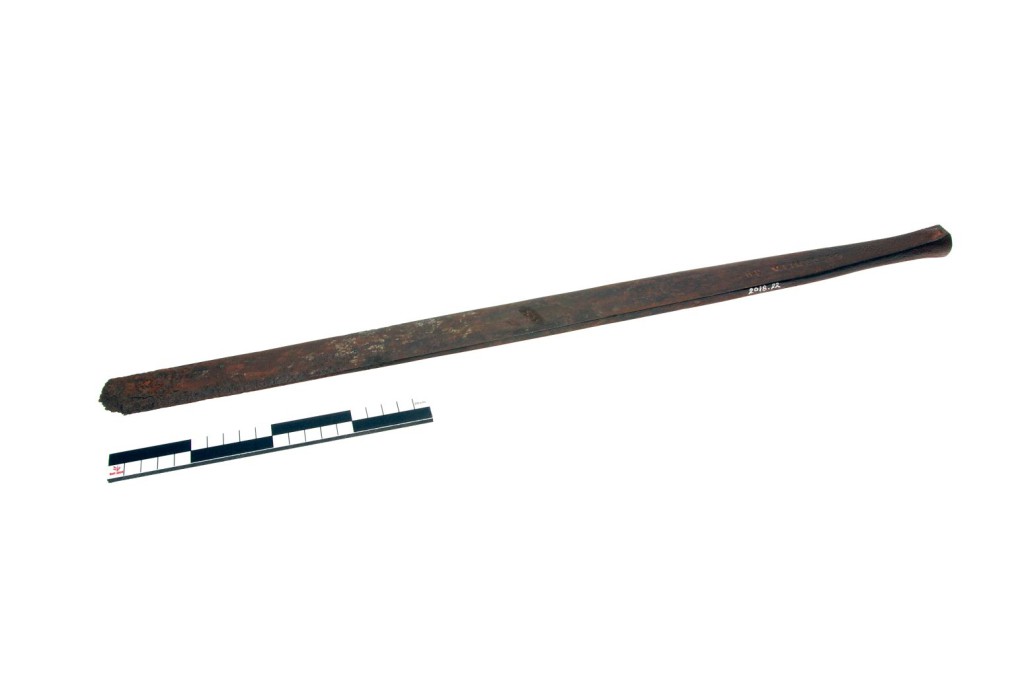
Slate splitting chisel
This text can only be consulted in Dutch
<https://www.mot.be/resource/Tool/slate-splitting-chisel?lang=nl>
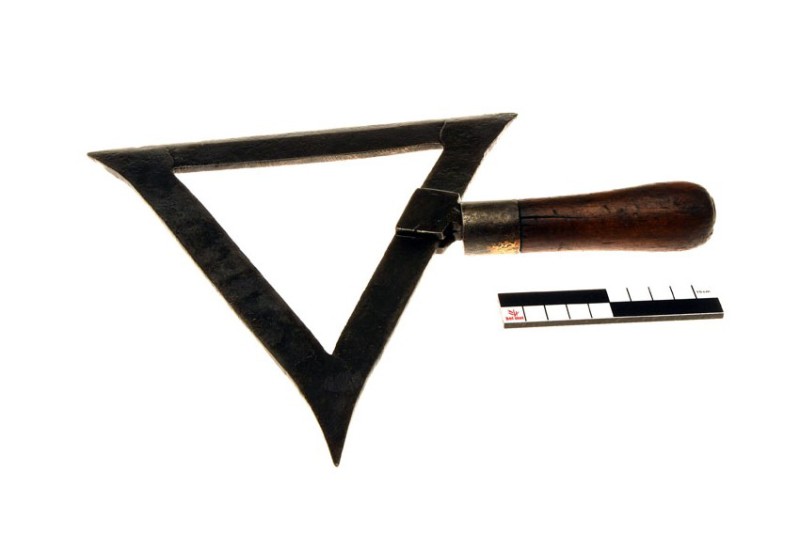
Slater's stake
The slater's stake is a tool for cutting slates to size. It has a sharp
straight edge at the top and a sharp point at the bottom that can be
hammered into the roof boarding. The slate is placed on the sharp top and
cut off with the roofer's hammer. There are different models: round,
triangular, rectangular, straight, curved. The straight models are made
entirely of metal and have no handle, while the triangular models have a
wooden handle. [MOT]
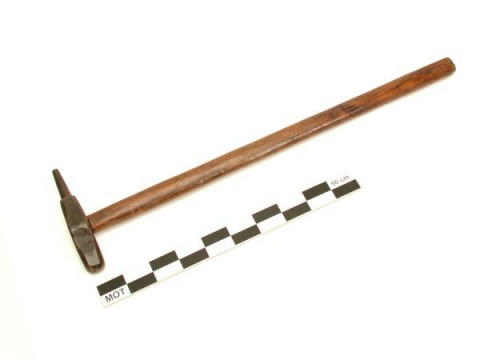
Slaugther hammer
Heavy hammer to stun cattle to be slaughtered, and then kill them with the
neck cut. The stunning can be done with a slaughter mask, a shooting device
or this slaugther hammer (1). It can be a wooden hammer (approx. 5-6 kg)
with a long handle (see sledgehammer). The working part can also be made of
metal and resemble a stone hammer. Or a hammer with a metal head that has a
rod-shaped end on one side, which can be used to punch through the skull to
crush the brain. Another model consists of a hollowed-out pin and a hook at
the other end. The hook would serve to pull the pin out of the skull when
it gets stuck. See also the punch. [MOT] (1) Banned since 1920 (by Royal
Decree of 5 June) in the Netherlands. In France since 1964.
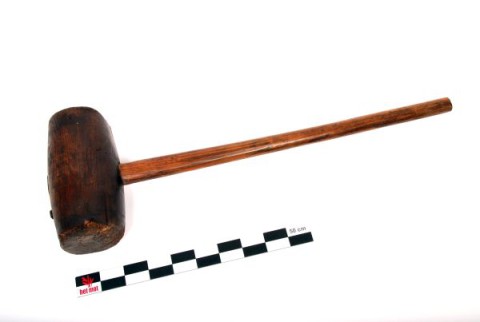
Sledgehammer
The sledgehammer is a heavy (up to 5 kg) wooden hammer with a long handle
(70-100 cm) for driving posts into the ground, splitting wood, driving a
thick peg into a hole, tamping soil (1), etc. The sledgehammer can be made
of a rough piece of wood or be fitted with a metal strap. It is made from a
knotty piece if possible. See also the slaugther hammer. [MOT] (1) Eg. DE
MAS: 382. See also the soil tamper
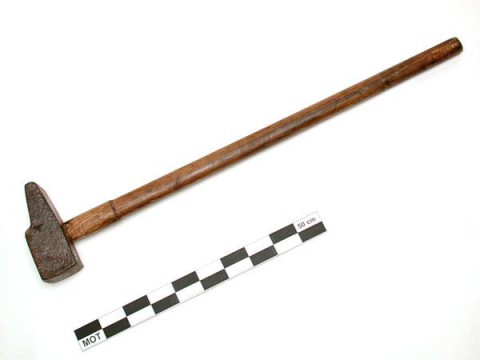
Sledgehammer
The sledgehammer is a heavy hammer (between 2 and 12 kg) with wedge-shaped
peen, which in some cases lies in the same plane as the handle. The handle
is long (approx. 60 to 100 cm) so that it can be gripped with both hands to
hit with great force. The sledgehammer is used by the blacksmith for heavy
forging work; many other professions use it too, such as the quarry worker.
When the blacksmith works with one or more helpers, he uses a forging
hammer to indicate where to strike. The helpers then each handle a
sledgehammer to do the actual forging work. [MOT]

Sleeker
A sleeker has a rectangular (approx. 10-15 cm long) blade of stone -
usually slate - metal or glass (1), one long side of which protrudes into a
wooden handle that must be gripped with two hands. The tanner uses the
sleeker to stretch, smooth, polish and push the moisture out of the
leather. [MOT](1) See SALAMAN 1986: 313.

Sleeker (moulding)
This text can only be consulted in Dutch
<https://www.mot.be/resource/Tool/sleeker-moulding?lang=nl>
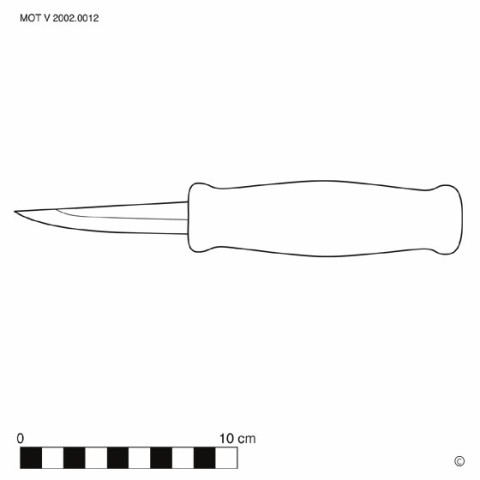
Sloyd knife
This text can only be consulted in Dutch
<https://www.mot.be/resource/Tool/sloyd-knife?lang=nl>
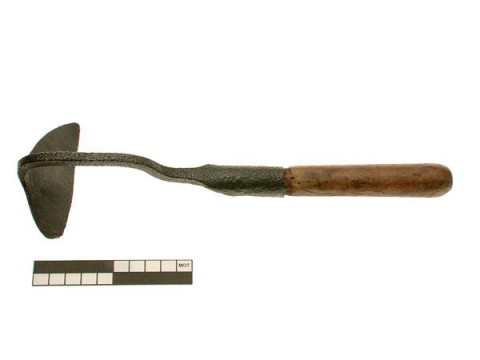
Small garden hoe
Hand tool that resembles a garden hoe, but whose thin, sharp blade is
usually not symmetrical and the swan-neck shaft and short (approx. 15 cm)
wooden handle - is located on the left or right part of the working part .
There are also straight models (V Dv 0851). With the small garden hoe, the
roots of the weeds are cut just below the surface of the earth, while
pulling. The tool is also used in agriculture for hand weeding and beets
thinning. See also the scuffle hoe. [MOT]
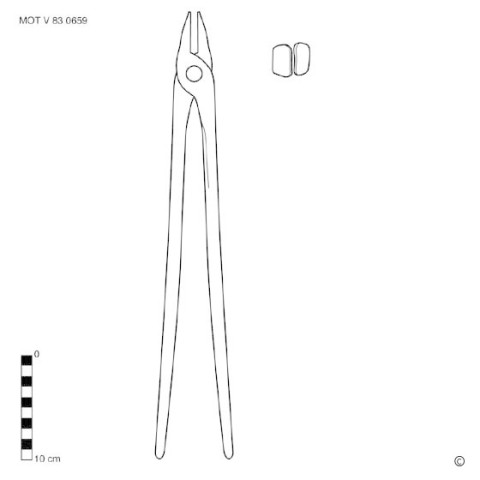
Smith's tongs
This text can only be consulted in Dutch
<https://www.mot.be/resource/Tool/smiths-tongs?lang=nl>
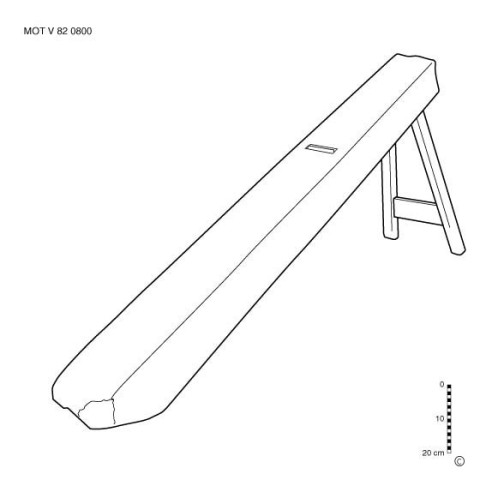
Smoothing plane
This text can only be consulted in Dutch
<https://www.mot.be/resource/Tool/smoothing-plane?lang=nl>
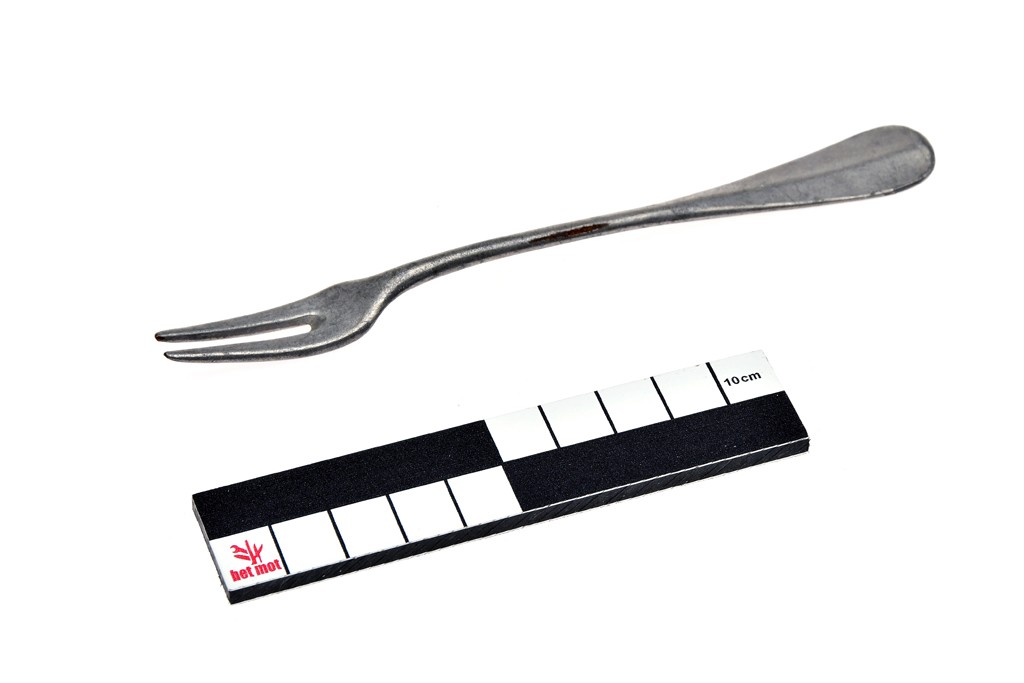
Snail fork
This text can only be consulted in Dutch
<https://www.mot.be/resource/Tool/snail-fork?lang=nl>
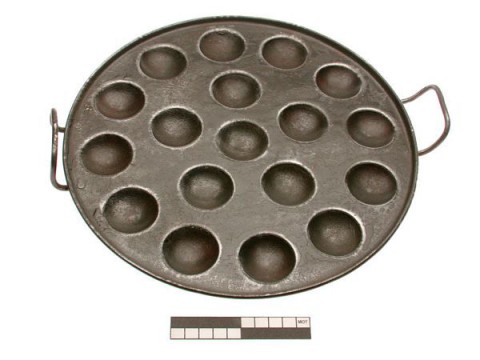
Snail plate
This text can only be consulted in Dutch
<https://www.mot.be/resource/Tool/snail-plate?lang=nl>
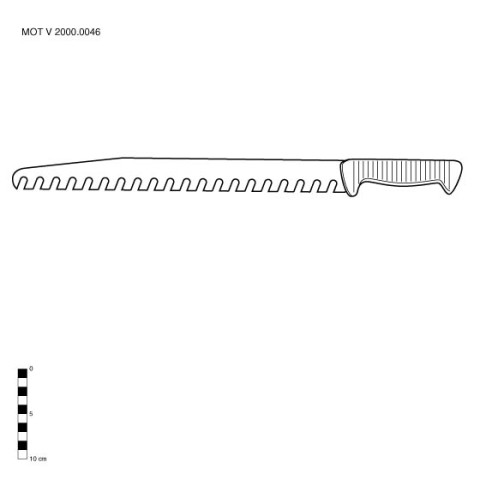
Snow saw
About 50-60 cm long and about 5 cm wide saw with usually very large teeth
(1) - compare with the frozen-food knife - with which snow blocks are cut
to build an igloo. The length of the hand tool is decisive for the size of
the blocks that can be sawn; the width to be able to exert enough force
when loosening those blocks (2). Not infrequently, the snow saw is made
yourself (3). [MOT] (1) Although long knives without teeth are also used.
(2) HAGEN: 56-59. (3) For example PRATER: 82: "use a piece of tempered
aluminum alloy about 1/8-inch thick, 2 inches wide and 26 inches long.
Attach a wooden handle to one end, leaving 20 inches for the cutting blade.
Hacksaw serrations in it for the cutting teeth."
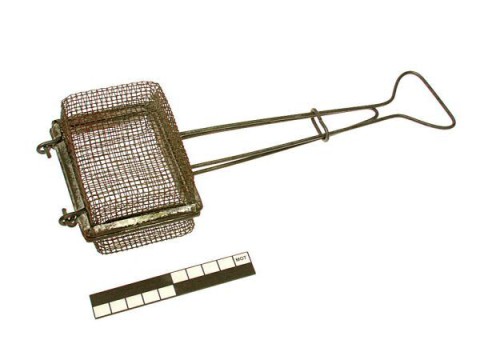
Soap saver
This text can only be consulted in Dutch
<https://www.mot.be/resource/Tool/soap-saver?lang=nl>
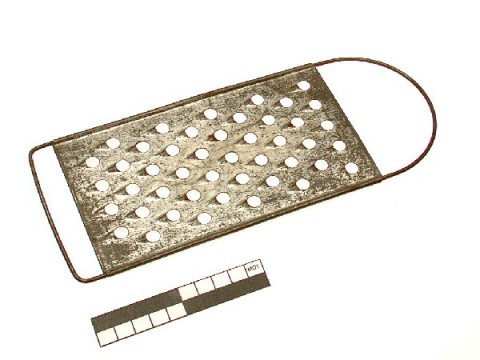
Soap shaver
Flat grater made of sheet iron (approx. 25-35 cm long; approx. 10-12 cm
wide), sometimes with a wooden frame, in which fairly large holes have been
punched and which is used to grate brown soap for suds. On a flat kitchen
grater with grating surfaces with holes of different sizes, one sometimes
finds a grater part for soap. [MOT]
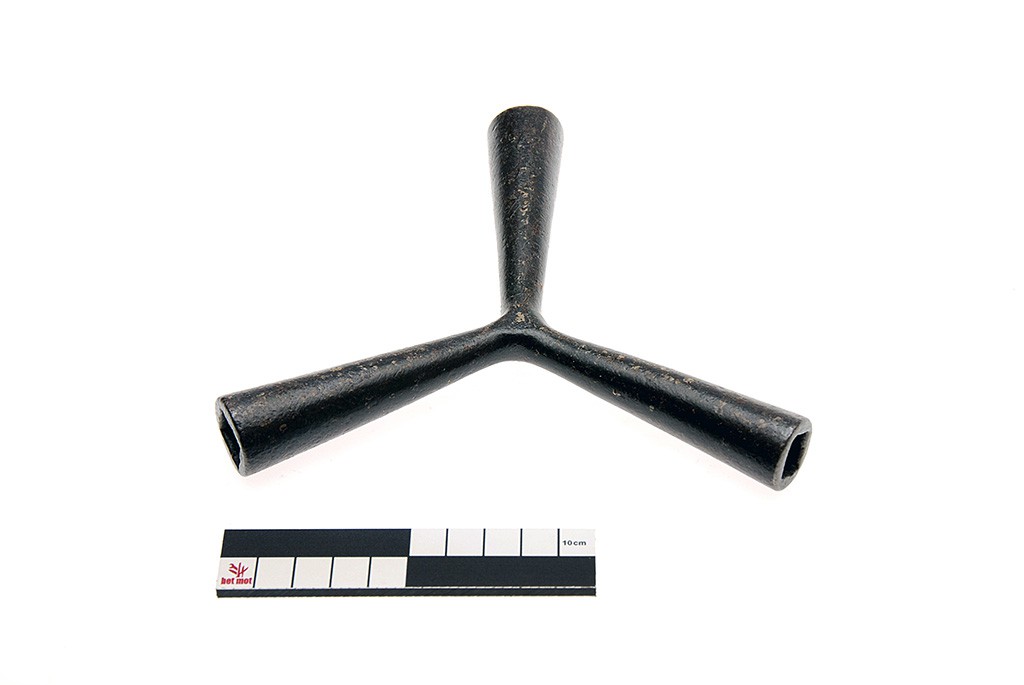
Socket wrench
This text can only be consulted in Dutch
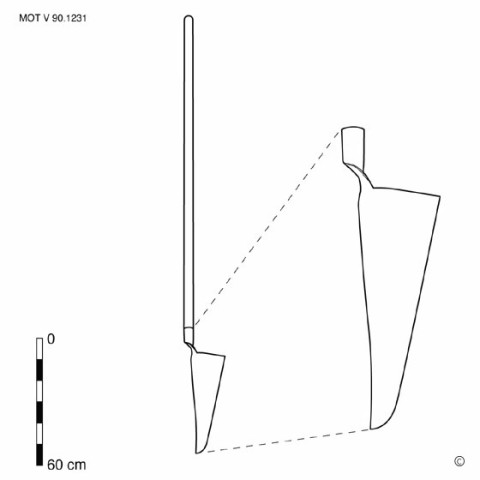
Sod cutter
This text can only be consulted in Dutch
<https://www.mot.be/resource/Tool/sod-cutter?lang=nl>
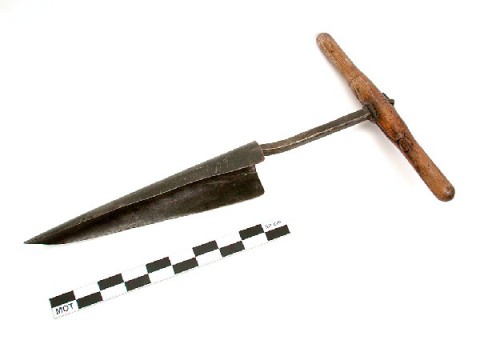
Soil auger
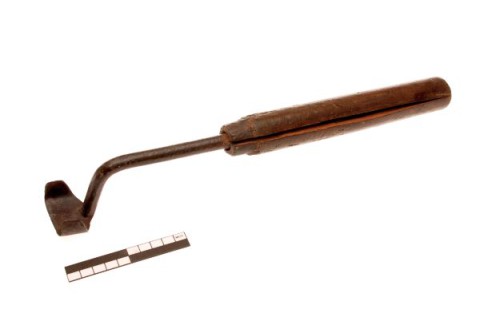
Sole knife
This text can only be consulted in Dutch
<https://www.mot.be/resource/Tool/sole-knife?lang=nl>
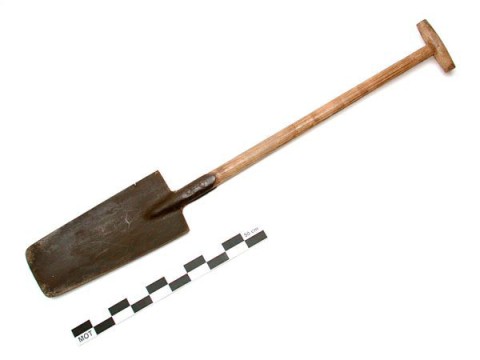
Spade
Spade with long (approx. 30-40 cm) and narrow (approx. 10-17 cm) blade that is slightly curved in relation to a T or D handle (70-95 cm). To make it easier to penetrate into the ground, the edge of the blade is often slightly curved and usually narrows a few centimeters downwards (1). The top is sometimes provided with a footrest to prevent damage to the user's shoe. To prevent the clay soil from sticking to the blade, the latter is dipped into a bucket of water before each stitch; sometimes dents are punched in the concave side of the blade with a hammer (2).In the 19th century, a wooden, studded blade was also used in light soil in addition to the steel spade (3).Exceptionally, an extension piece is sometimes attached to the top of the blade of the garden spade instead of the sting spade in order to dig deeper (4).A spade is used for digging or digging deep, i.e. working the soil two, three or four stitches deep (5). It is also used to extract peat or to transplant plants or crops with a taproot. Osiers use...
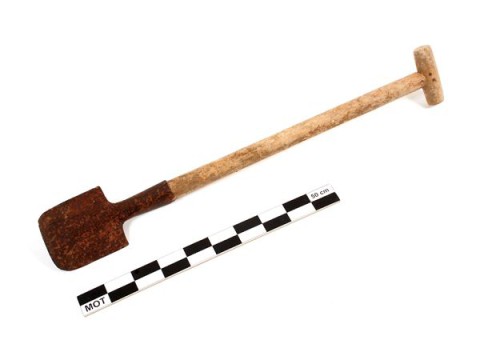
Spade (brickmaker)
To dig clay, a spade is used with a short T handle and a small iron blade
that is in the same plane as that handle. The stem length is adapted to the
user; the length of the blade decreases as the digger digs out the clay
deeper (from about 18 to about 12 cm). The worker forcefully pushes the
spade into the ground without using his foot. That is why he makes sure
that the edge is always sharp and he regularly visits the blacksmith.
[EMABB]
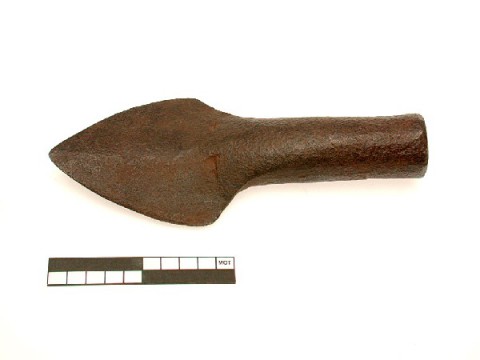
Spade mould
This text can only be consulted in Dutch
<https://www.mot.be/resource/Tool/1104?lang=nl>
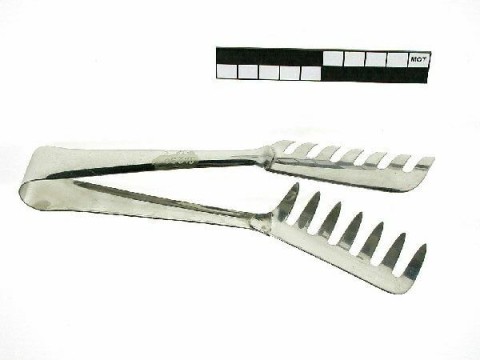
Spaghetti tongs
With these tongs you grab the spaghetti from the bowl and put it on the
plates. The jaws are broad and serrated to grip the top layer of spaghetti.
When one grabs too deep, the spaghetti is difficult to grasp or one takes
too much at once. The jaws are slightly slanted on the axis so that one can
easily enter the bowl and still use the full width of the jaws. See also
the spaghetti or pasta spoon. [MOT]
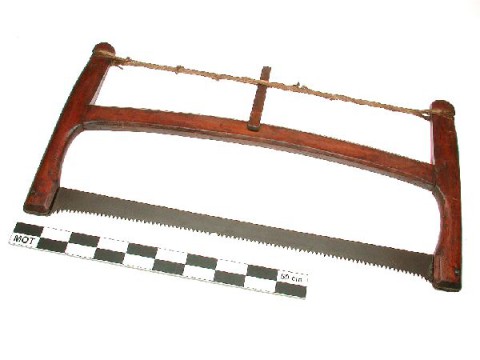
Span saw
The ordinary span saw comes in various sizes: from 35 to 120 cm. Depending
on its height and the shape of its teeth, it is used to cut large or small
shelves and battens. Contrary to the rip saw, the wide (approx. 4-5 cm)
blade of the span saw is fixed in the straight frame. Nowadays there are
also foldable models. See also firewood saw and bow saw. [MOT]
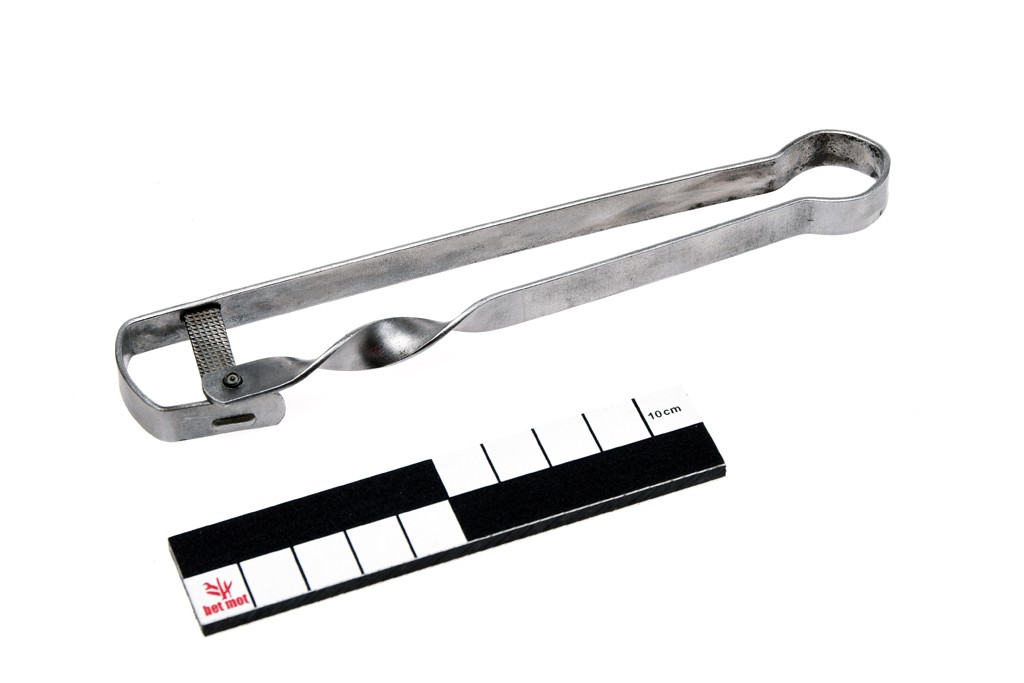
Spark lighter
This text can only be consulted in Dutch
<https://www.mot.be/resource/Tool/spark-lighter?lang=nl>
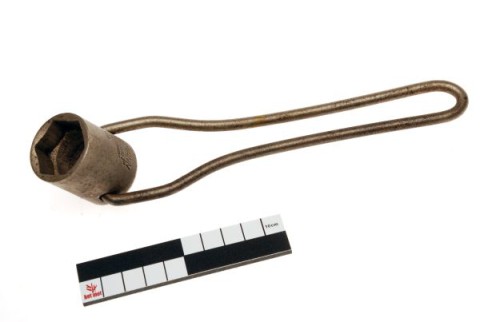
Spark plug spanner
This text can only be consulted in Dutch
<https://www.mot.be/resource/Tool/spark-plug-spanner?lang=nl>
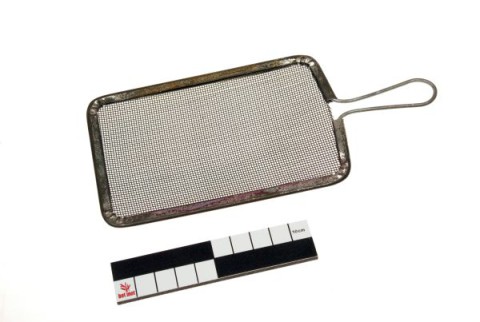
Spatter sieve
The spatter sieve is a tool for spattering paint with a stencil brush. For
example, "spat a leaf, i.e. place a plant leaf on a paper and then sprinkle
watercolor on it through a metal mesh (spatter sieve); afterwards, the
shape of the leaf has remained white and the paper around it is finely
speckled." (1) It consists of a small (approx. 13 by 8 cm) metal sieve
(mesh width approx. 1 mm) with a short (approx. 5 cm) metal wire handle.
[MOT] (1) Dictionnary V.D. (Van Dale)
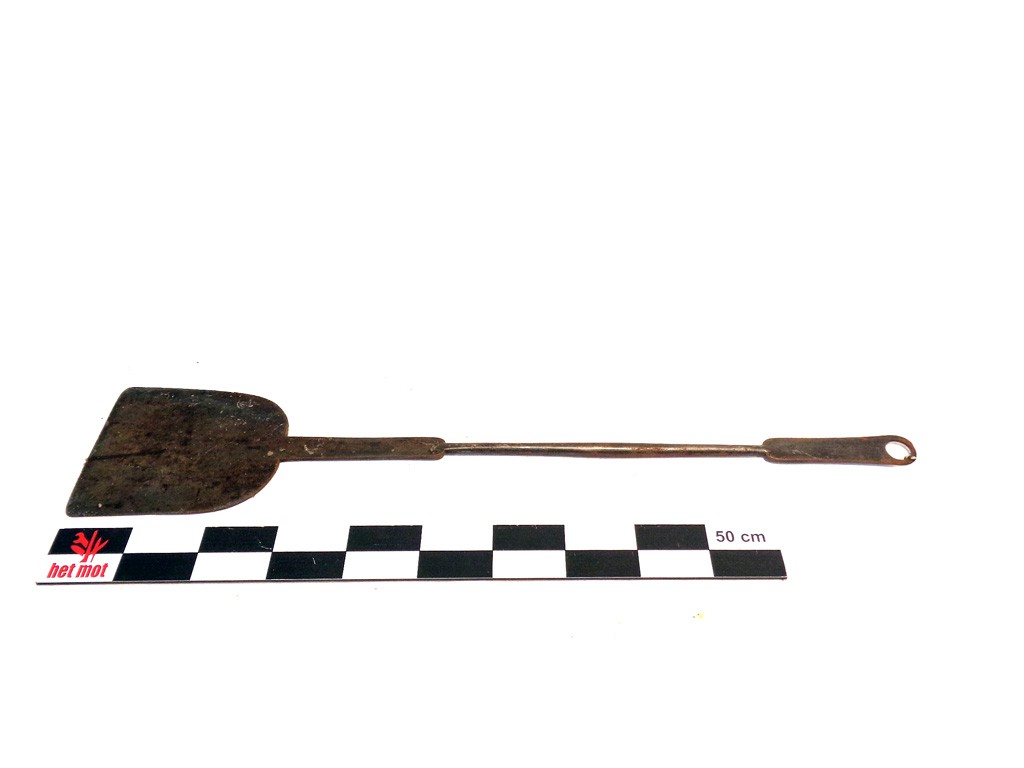
Spatula
This text can only be consulted in Dutch
<https://www.mot.be/resource/Tool/cake-turner?lang=nl>
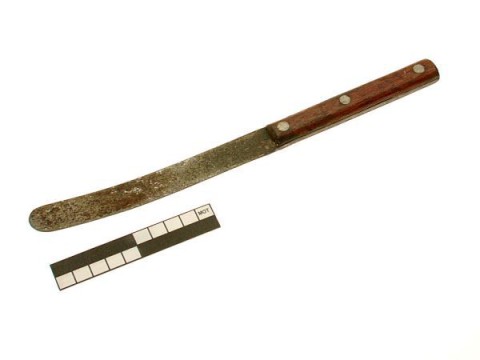
Spatula for soil auger
Strong spatula to remove soil from the working part of a soil auger. It has
a short (approx. 15 cm) flat curved top, attached to a straight wooden
handle. See also the key for soil auger. [MOT]
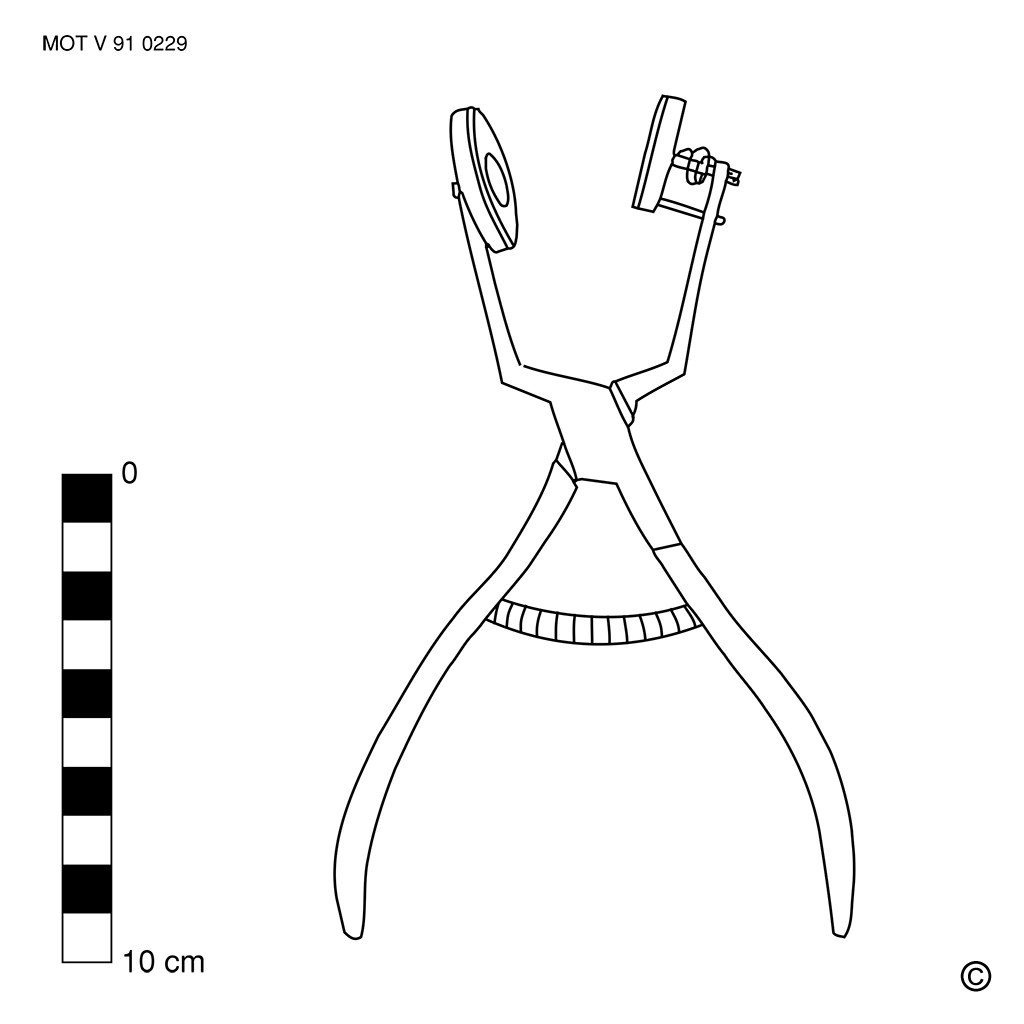
Spectacle glass pliers
The optician can easily hold spectacle lenses with these spectacle glass pliers. The jaws consist of two round plates, which are covered with rubber on the inside. This way, the glasses are not damaged and you have a better grip on them. One jaw is mounted on a spring, so that the pressure is applied more gently to the glass. This jaw can also move slightly up or down. The other jaw is slightly larger and hollow on the inside for the convex side of the glass. A spring opens the pliers automatically. These pliers are similar to the watch glass pliers used by clockmakers. [MOT]
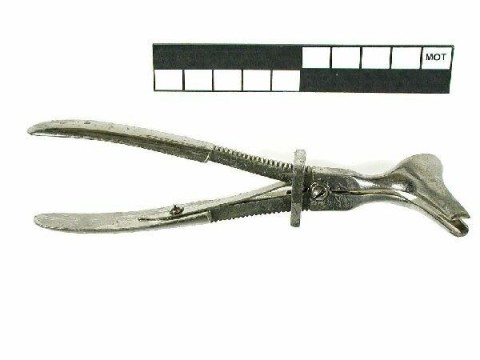
Speculum
This text can only be consulted in Dutch
<https://www.mot.be/resource/Tool/speculum?lang=nl>
Spinning hackle
This text can only be consulted in Dutch. See also the hackle for purifying
flax. [MOT]
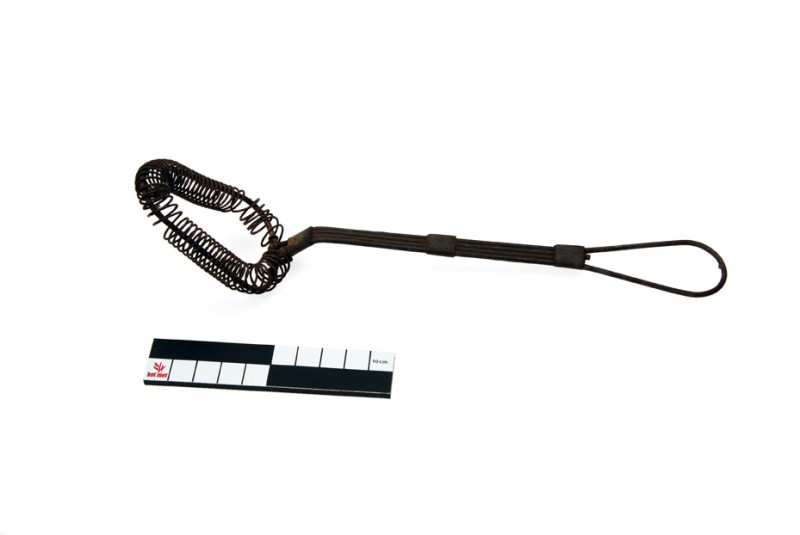
Spiral whisk
This text can only be consulted in Dutch
<https://www.mot.be/resource/Tool/spiral-whisk?lang=nl>
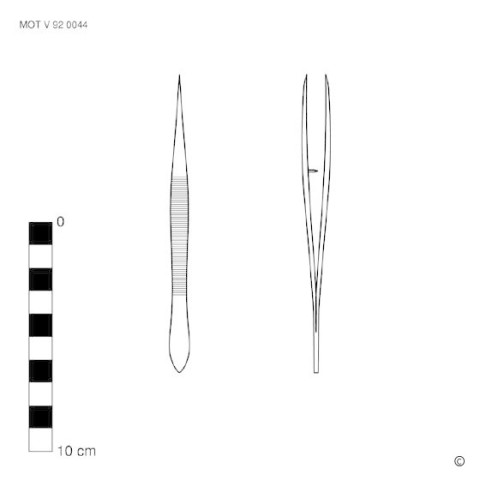
Splinter tweezers
This text can only be consulted in Dutch
<https://www.mot.be/resource/Tool/splinter-tweezers?lang=nl>
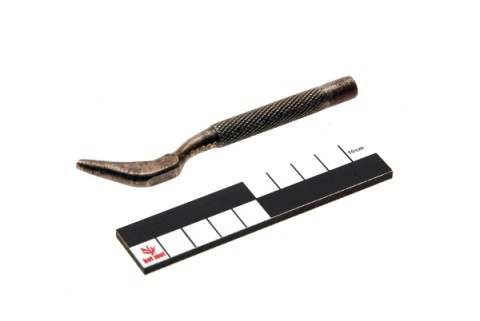
Split pen drawer
This text can only be consulted in Dutch
<https://www.mot.be/resource/Tool/split-pen-drawer?lang=nl>
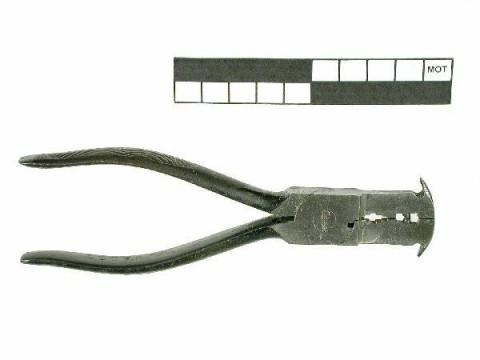
Split pin pliers
This text can only be consulted in Dutch
<https://www.mot.be/resource/Tool/split-pin-pliers?lang=nl>
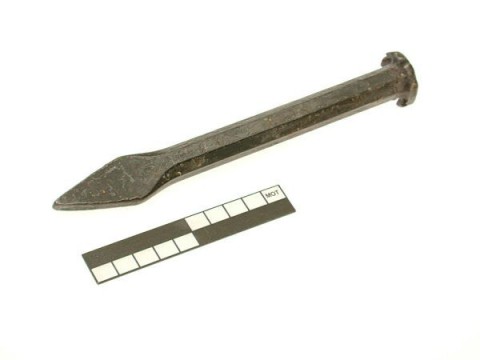
Splitter (stonecutter)
The stonecutter's splitter is a heavy metal chisel (300-400 gr) with a
narrow cut to carve holes for wedges in natural stone. It is approx. 15-20
cm long with a narrow (0.5-1 cm), straight or convex cut. The whole is
rectangular or octagonal in section. To be distinguished from the splitting
chisel of different metal workers. [MOT]
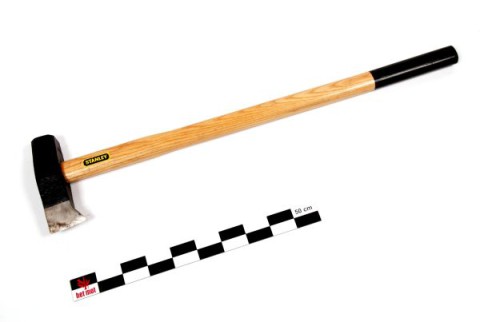
Splitting axe
The splitting axe is used to split firewood. It consists of a straight
handle of approx. 70-80 cm and a heavy (3-4 kg) iron with a triangular
cross section, in which, at the end, an eye is forged. The cut is often
longer than the body itself is high. The splitting axe is never hit (cf.
splitting wedge with handle). See also splitting wedge. [MOT]
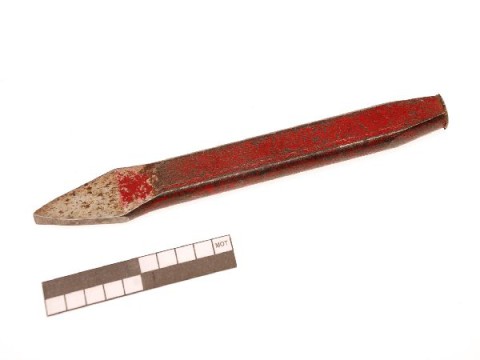
Splitting chisel
All-metal chisel approx. 20-50 cm long to cut a narrow groove in a metal
plate to make it easier to break or in a horseshoe where the holes for the
horseshoe nails will be driven. The splitting chisel has a fairly narrow
cut (approx. 9-13 mm) which is ground at an angle of approx. 60 °. This
allows you to work with it to a fairly great depth. The whole is usually
rectangular in cross section. To be distinguished from the stonecutter's
splitter. [MOT]
